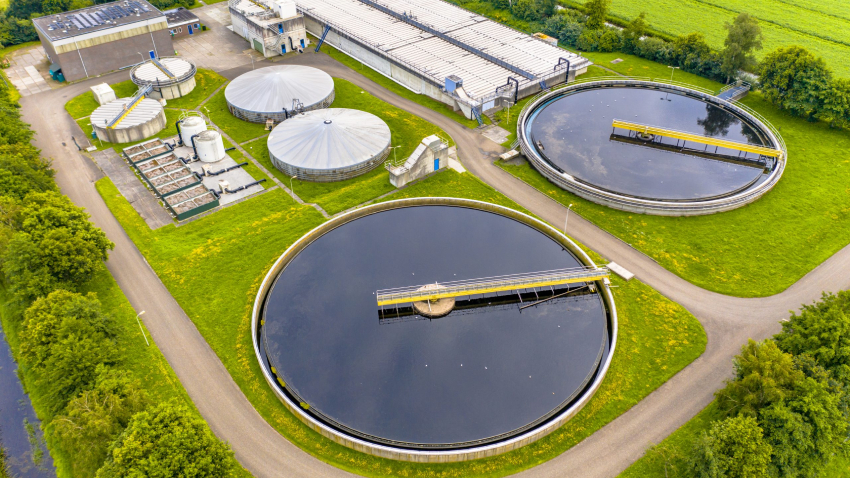
Sewage Treatment Plant in Gujarat

Sewage Treatment Plant Processes
A sewage treatment plant (STP) is a critical infrastructure facility designed to treat municipal waste water, ensuring that it is adequately processed before being released back into the environment or reused. The primary objective is to remove contaminants, protect public health, and minimize environmental impact.
Preliminary Treatment
- Screening: This stage involves the removal of large debris (such as plastics, leaves, and other non-biodegradable materials) using mechanical screens to prevent damage to subsequent treatment equipment.
- Grit Removal: Following screening, the waste water flows into grit chambers where heavier inorganic particles, such as sand and gravel, settle to the bottom, reducing wear on pumps and other machinery.
Primary Treatment
- Sedimentation: In primary clarifiers, the waste water is held for a period to allow gravity to separate solids (sludge) from liquids. The settled sludge is removed for further processing, while the clarified liquid, referred to as primary effluent, moves on to secondary treatment.
Secondary Treatment
Biological Treatment: This stage leverages microbial activity to decompose organic matter. Common methods include:
- Activated Sludge Process: Air is introduced into aeration tanks, fostering aerobic bacteria that consume organic pollutants. The mixed liquor then flows to secondary clarifiers, where biomass is allowed to settle.
- Biofilm Systems: These systems involve waste water passing over surfaces that support biofilms, where microorganisms attach and metabolize organic contaminants.
- Secondary Sedimentation: The resultant effluent is separated from the biomass, with excess sludge recycled back to the aeration tanks or removed for treatment.
Tertiary Treatment
This stage is employed to further refine the effluent to meet specific quality standards. Techniques may include advanced filtration, chemical coagulation, nutrient removal (nitrogen and phosphorus), and disinfection (using chlorine or ultraviolet light) to eliminate pathogens.
Sludge Treatment
The accumulated sludge undergoes processes such as anaerobic digestion, which reduces its volume and stabilizes organic matter. Dewatering techniques (like centrifugation or belt presses) are used to prepare the sludge for safe disposal or beneficial reuse, such as land application or energy generation.
Discharge and Reuse
The treated effluent may be discharged into receiving water bodies or reused for non-potable applications, including irrigation, industrial processes, or, in some cases, potable water supply following advanced treatment methods.
Significance of Sewage Treatment
- Public Health Protection: Effective sewage treatment is vital in preventing the spread of waterborne diseases by removing pathogens and harmful pollutants.
- Environmental Safeguarding: Treated waste water significantly reduces the risk of water pollution, safeguarding aquatic ecosystems and preserving biodiversity.
- Resource Recovery: STPs facilitate the recovery of valuable resources, such as water, nutrients (nitrogen and phosphorus), and energy, promoting sustainability in urban environments.
Challenges and Considerations
- Infrastructure Investment: Establishing and maintaining STPs necessitates substantial financial resources and technical expertise.
- Emerging Contaminants: The presence of pharmaceuticals, personal care products, and microplastics in waste water presents ongoing challenges that require the development of advanced treatment technologies.
- Climate Resilience: STPs must be designed to withstand the impacts of climate change, including increased flooding and extreme weather events, ensuring consistent operation and service delivery.
Sewage treatment plants are indispensable to modern urban infrastructure, contributing significantly to public health, environmental protection, and resource sustainability. Their effective operation requires continual innovation and adaptation to evolving challenges and regulatory frameworks.

